Up Next

Max Verstappen surely killed a few dreams with an immaculate victory drive around the Hermanos Rodriguez circuit which in the process made him the first man to win 14 grands prix in a season.
There were the dreams of the immense and wildly enthusiastic crowd hoping their hero Sergio Perez might pull it off in front of them.
That was actually a very realistic dream: with both drivers’ and constructors’ championships already cleaned up, the only remaining target for Red Bull is to get a 1-2 in the drivers’ championship.
What better way of doing that than engineering a possible home victory for Perez? Would Verstappen be willing to help facilitate that? Checo, after all, had helped him win Barcelona. Max said no, he wouldn’t be giving any gifts. But then he’d surely say that whether he was prepared to or not.
But you can’t be gifted a victory if there’s a car between you and your potential benefactor. That’s the other dream Verstappen’s immaculate dominance killed: that of a breakthrough Mercedes win.
With the races to the end of the season counting down, no wins yet on the board but an increasingly competitive W13, George Russell believes only his own error cost him pole.
But starting second and third, all was not lost for him and Lewis Hamilton. They were going to work together as a team, Hamilton emphasised, the implication being some sort of strategic scissor move on Verstappen.
But you can’t do that when you’re on the wrong tyre and Verstappen never really felt the breath of the Mercedes hot on his neck once he’d made his way through the first couple of turns in the lead (the first time that’s ever been done from pole in the modern era here).
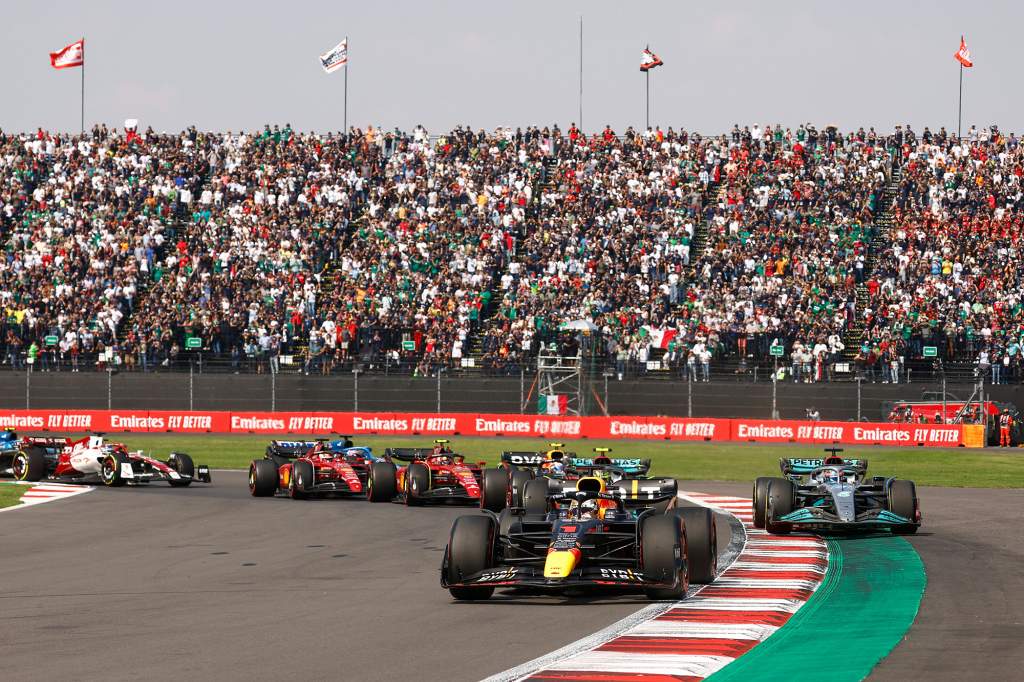
His holding of Russell out over the Turn 2 exit kerb allowed Hamilton to instantly zap past the sister Mercedes and for Perez to then slipstream past it up to Turn 4.
Verstappen-Hamilton-Perez-Russell. That essentially was the order from Turn 4, lap one until the end of the race.
Perez might have undercut past Hamilton at the stops if he hadn’t suffered a 2.5s delay from a sticking wheelnut (and that might have opened the way for the fairytale Perez present). There was also a moment when Perez was within 0.03s of getting DRS on Hamilton. But other than that Hamilton, even on the ‘wrong’ tyres, was always able to stay just out of Perez’s reach.
Wrong tyres? Mercedes came into the race believing the race to be poised between a one-stop and a two and starting on the medium kept the one-stop option open but the soft did not, so it believed.
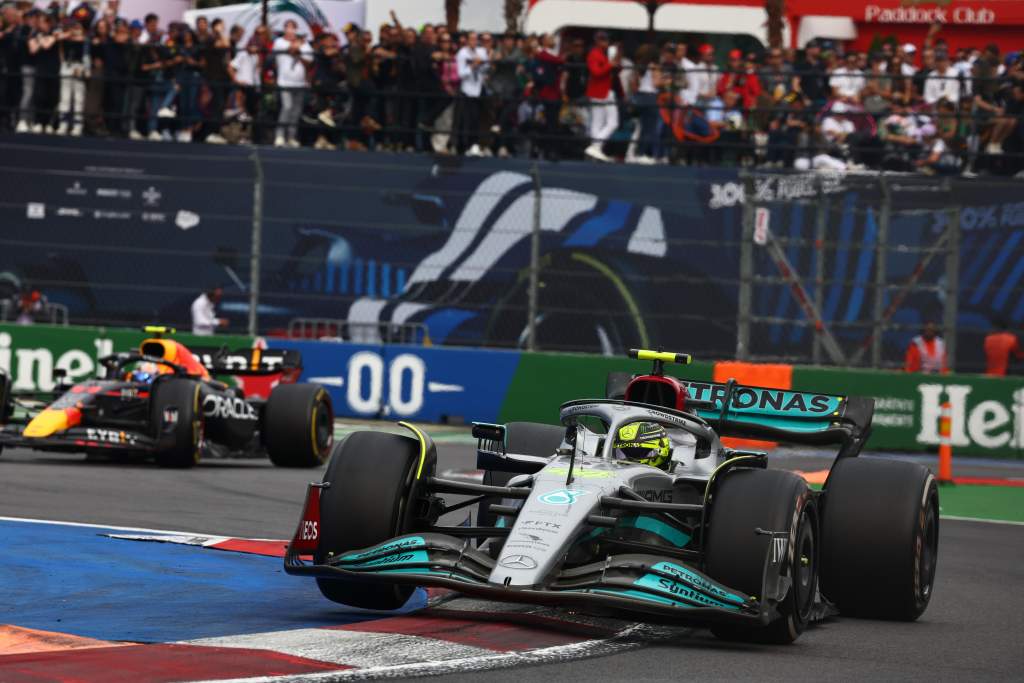
Mercedes thought the medium would begin dropping away after about 35 laps, the soft after about 16. Leaving 20 laps still to go. Besides, it can usually make the hard work pretty well. So it began on the medium with both cars. As Hamilton saw the blankets removed from the Red Bulls, one in front, one alongside, and saw the red sidewalls, “I thought, ‘oh s**t’.”
Red Bull too thought it was close between one and two stops but, confidence high, wasn’t so conservative. If it was a two, then the soft would be a great opening tyre. If it was a one, perhaps it could get the soft to last long enough to get the medium to the end.
Part of its confidence was founded in how exceptionally good Verstappen has become in conserving the rubber but maintaining speed. Perez came into the team as the tyre whisperer, but Red Bull believes Verstappen has now become even better at that game. It’s a particularly valuable skill if the race is poised between stops. With nothing to lose now it’s won everything Red Bull is more gung-ho than ever.
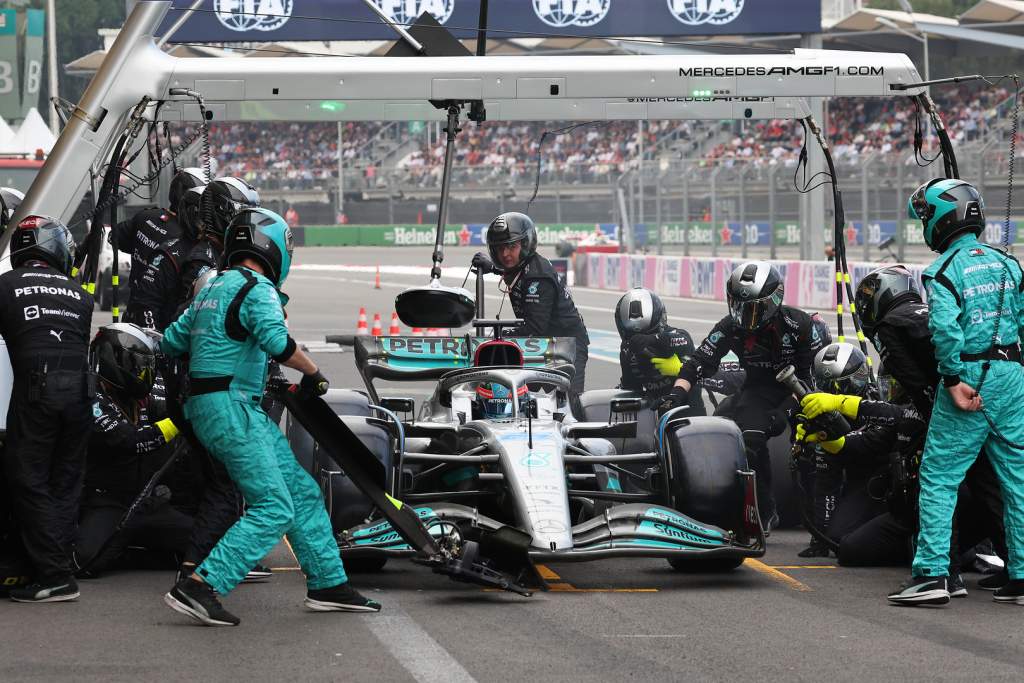
If it had turned out to be a two-stop, Mercedes’ strategy would have looked pretty good. It could have switched to softs (albeit a used set, just as were those used by Red Bull to start on) on the lead car at the first stops for the undercut and left the other out running longer, ready for a fresher-tyred final stint, perhaps pincering Verstappen into an impossible situation.
But it wasn’t a two-stop. The track temperature dropped very quickly from an initial 47-degree to 39-degrees C – giving the soft a much easier time and allowing the Red Bulls very respectable opening stint lengths, comfortably long enough to get onto the mediums for the remainder of the distance. What that falling track temperature also did was ensure the hard never came up to its working temperature.
The combination of a conservative mindset and a sudden drop in temperature, lost Mercedes any chance of pressuring Verstappen.
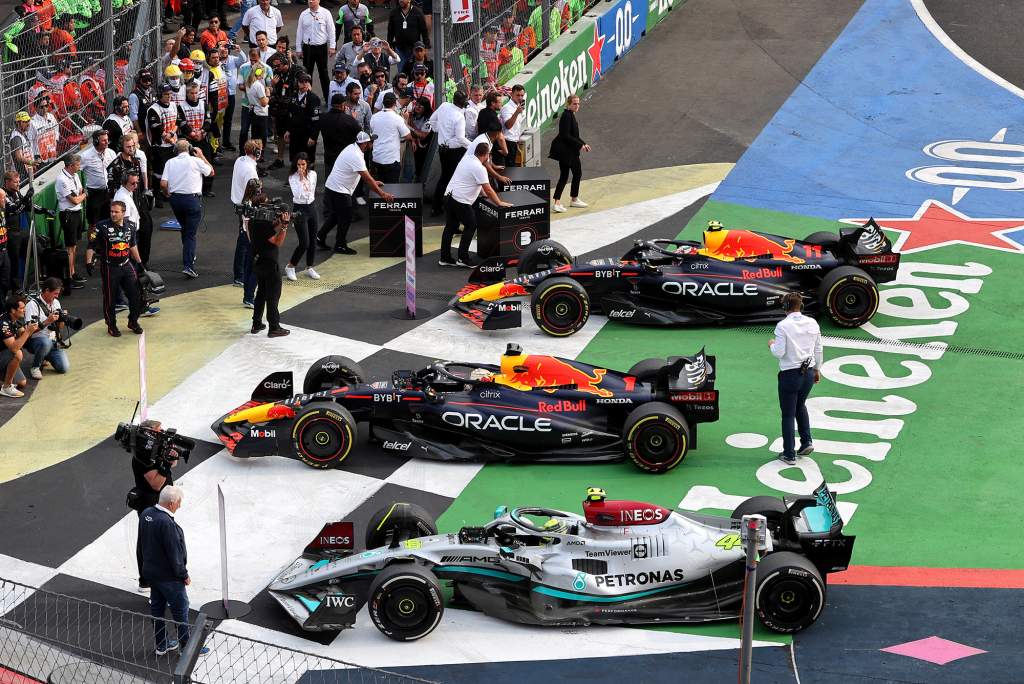
Even if it’d been able to, it’s unlikely it’d have beaten him. Taking the fuel weight out of the equation, comparing the medium-tyred pace of Verstappen and Hamilton suggests the former was around 0.15s faster.
Perez made his stop on the 23rd lap of 71 (with a 2.5s delay initially snowballing into further delay as he came out behind the yet-to-stop Ferraris), Verstappen on the 25th.
Red Bull looked at the wear of the softs which had just come off Verstappen’s car and realised it could have gone much longer. This reassured the team it could easily make the rest of the distance on the mediums. It was now definitely a one-stop.
Hamilton had maintained the gap behind Verstappen at about 2s and stayed out until lap 29, switching then to the ill-fated hards. Russell thus assumed the lead and the plan at this point was to try to leave him out long enough to get onto the softs, now that Mercedes had seen how that tyre had held up on the Red Bulls, for a split strategy.
But the longer Russell stayed out, losing up to 1s per lap to the new-tyred Perez, the further behind the second Red Bull he was going to be upon rejoining. His mediums were dropping off. He was going to be too far behind even for the soft to make up the difference.
Russell was all for staying out, probing for some opportunity to break the stasis he found himself in, but on the numbers it wasn’t going to work. Better to limit the damage, Mercedes believed, bail out – and get onto the hard, just as Hamilton had already done. As it turned out the hard was slow.
Plus, Mercedes’ estimates were still on the conservative side for it didn’t believe the soft would have done the remaining 37 laps as Russell pitted on lap 34. It almost certainly would have done. Sebastian Vettel did an opening stint of 38 laps on it and those who switched to it late (Daniel Ricciardo, Alex Albon), with the fuel loads low and the track rubbered in, did well.
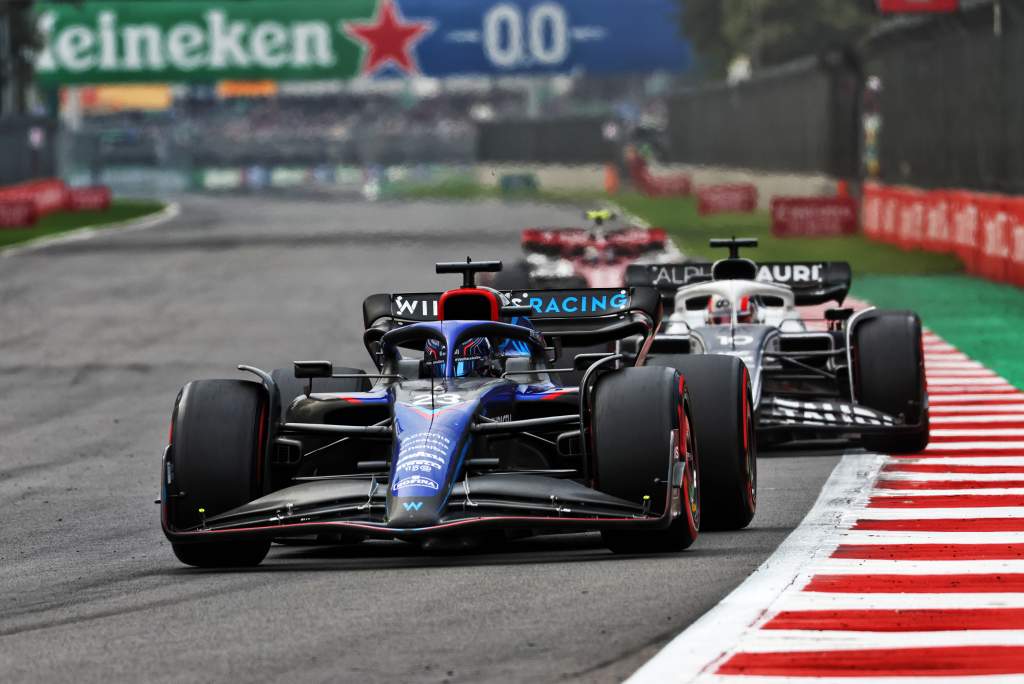
Mercedes believed Red Bull’s mediums would drop off before the end. Hamilton and Russell instead felt no grip from the fronts and waited in vain for the mythical drop-off for Verstappen and Perez respectively.
While playing this strategic poker game, everyone was having to improvise some combination of lift and coast and short bursts of attack – for the thin air meant, as usual, the brake temperatures could get wildly out of control very quickly. The air in front of Verstappen may have been clean but it was still thin – and even he was having to do a lot of car management.
Like that, they all shimmied their way to the end, Verstappen in total control throughout, Hamilton 15s adrift and always just out of Perez’s reach. Russell did finally get to sample the soft tyre – with a free pitstop two laps from the end so as to secure the fastest lap.
Why was his pitstop free? Because the Ferraris were so far behind.

There were two Ferraris in this race but their presence was rather lower-key than usual. With their small turbos turned down to avoid the sort of catastrophe we saw when the shaft ran too fast in the high-ish altitude of Austria (but nowhere near as high as here), they were very short of power. Nor did they handle well.
Carlos Sainz and Charles Leclerc (in that order) were in a no man’s land in fifth and sixth: far from the Red Bull/Mercedes match-up, equally far clear of the midfield battle which was won on this occasion by… the McLaren of Daniel Ricciardo!
It was a result with its foundation upon how long Ricciardo, with no undercut pressure from behind (unlike team-mate Lando Norris who was battling with Pierre Gasly a few places ahead for a lower points finish) was able to stay out long enough on his original mediums to get onto softs for the last 26 laps.
With these he began picking cars off – including the by-now hard-tyred Norris – even barging aside a disgruntled Yuki Tsunoda, until there were no more cars in sight.
Great on the tyres, ruthless in late attack, it was a reprise of Old Daniel, regardless of the 10s penalty for the Tsunoda incident which made no difference to his seventh position.
Fernando Alonso might have been able to stay within penalty range of Ricciardo, had his Alpine not lost a cylinder and then retired.
Shortly before that Ricciardo had passed the other Alpine of Esteban Ocon, who took eighth ahead of the battling Norris and Valtteri Bottas, both rueing their ‘Mercedes’ medium-hard tyre strategy. A shout-out to Albon in finishing his gripless Williams 12th, ahead of five faster cars with a medium-soft strategy.
Hindsight says Mercedes lost the chance of taking Verstappen on because of its tyre choices. But in reality, was anyone going to stop Max Verstappen in his current irresistible form?
Only with the same tyres, winning the start and somehow avoiding an undercut might they have been able to do so. But even that would have been a stretch.
Those tyre choices meant the race never quite broke out, but the result would surely have been the same either way.






